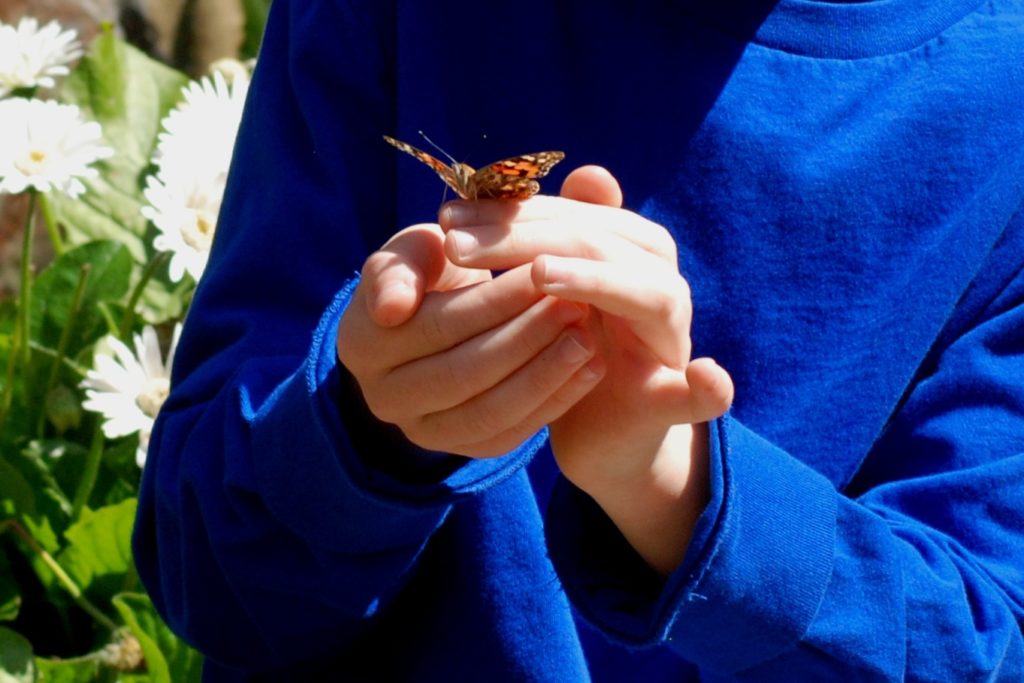Ideas for integrating language arts curricula are listed by grade level in the Life Lab publication: Common Core Math and English Language Arts Standards We Can Frequently Reinforce in Gardening, Cooking and Tasting Activities. Common Core Connections
Reading
Many books for children, both fiction and non-fiction, that focus on gardens or garden related subjects are available in your school library and in the Gardening Books section of the School Garden website.
You can design a garden with a literary theme (e.g., Peter Rabbit, a series, or an author) with references to the book or books throughout the garden. A Dr. Seuss garden might include wild looking veggies such as Brussels Sprouts, and succulents such as tree aloes that look like Truffula trees from the Lorax. Teachers can incorporate different books for different grade levels. Book posters can be a part of the garden, either laminated or protected on roofed kiosks. School librarians may also want to use these gardens. For older students, a Shakespeare garden might be planted with plants grown in 17th century England or mentioned in his works.
Include reading nooks, hay bales, benches, etc. to promote the pleasure of reading in the garden. The garden can also be the location for “Read Outs,” partner or “Buddy” reading, cross-age reading tutorials, and individual sustained silent reading. Add scarecrows dressed as characters from grade level literature or as the students themselves enjoying a book in the garden.
Writing
With a simple clipboard, the garden becomes a wonderful arena for creative and journal writing. Being outside brings enjoyment to writing assignments. Students might interview a classmate, or work on a collaborative story, play or group report in the garden where their conversation does not interfere with classroom learning.
You can use the garden to support learning grammar (e.g. Choose two adjectives to describe a plant or a vegetable growing in the school garden.) and to support writing curriculum requirements. Use the garden to:
-
- Teach letters of the alphabet and phonics to young students. (S is for soil, sunflowers, etc.)
- Provide inspiration for concrete and structured poetry. Try haikus, cinquains, five senses poems (i.e. I see…, I hear…, I smell…, I taste…, I feel…, I know).
- Offer journal writing opportunities. Journals are excellent tools for maintaining permanent records of students’ experiences in the garden. Creating a journal provides an opportunity for students to use observational, imaginative, expressive, and artistic skills. Making regular entries in a journal helps develop writing and observation skills and provides information for drawing conclusions. They can also be used to record measurements such as numbers of plants or leaves or daily soil and air temperatures.
